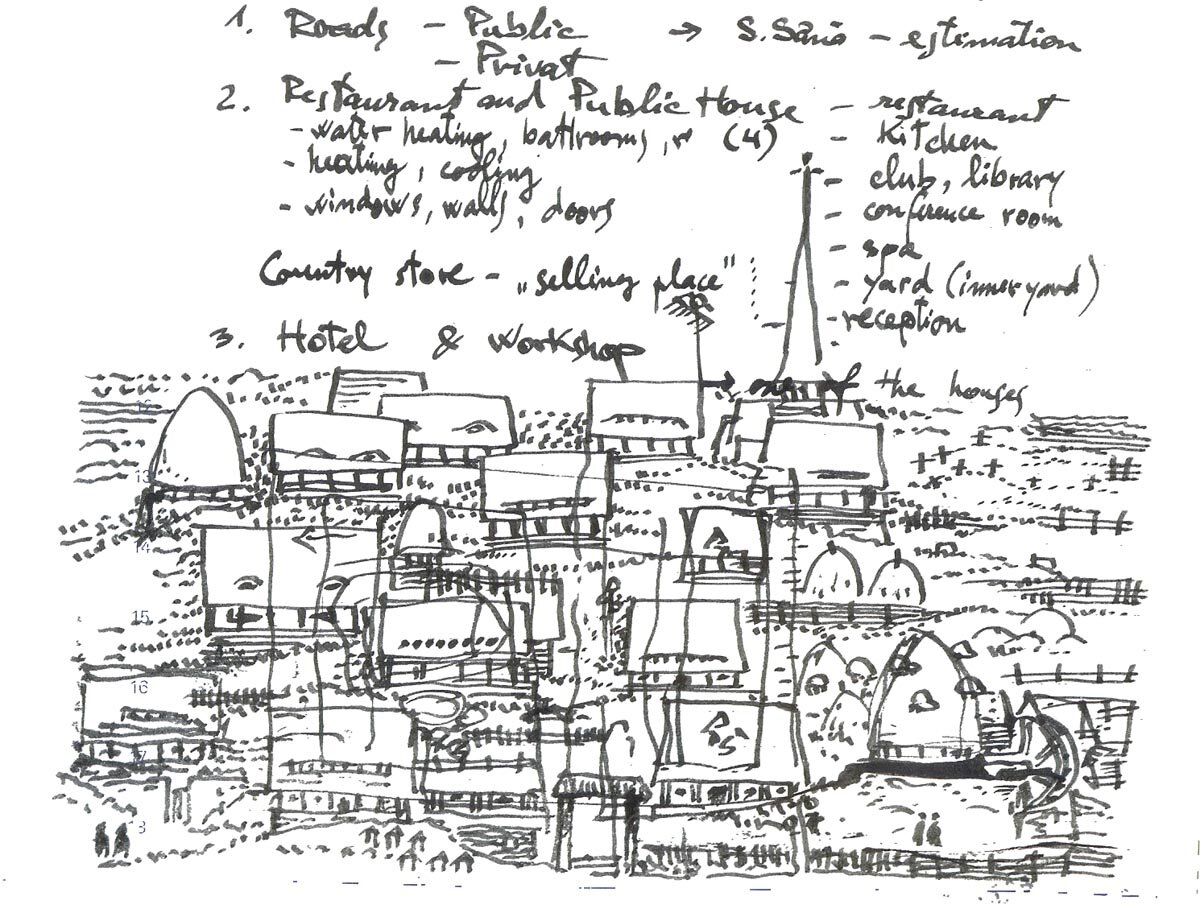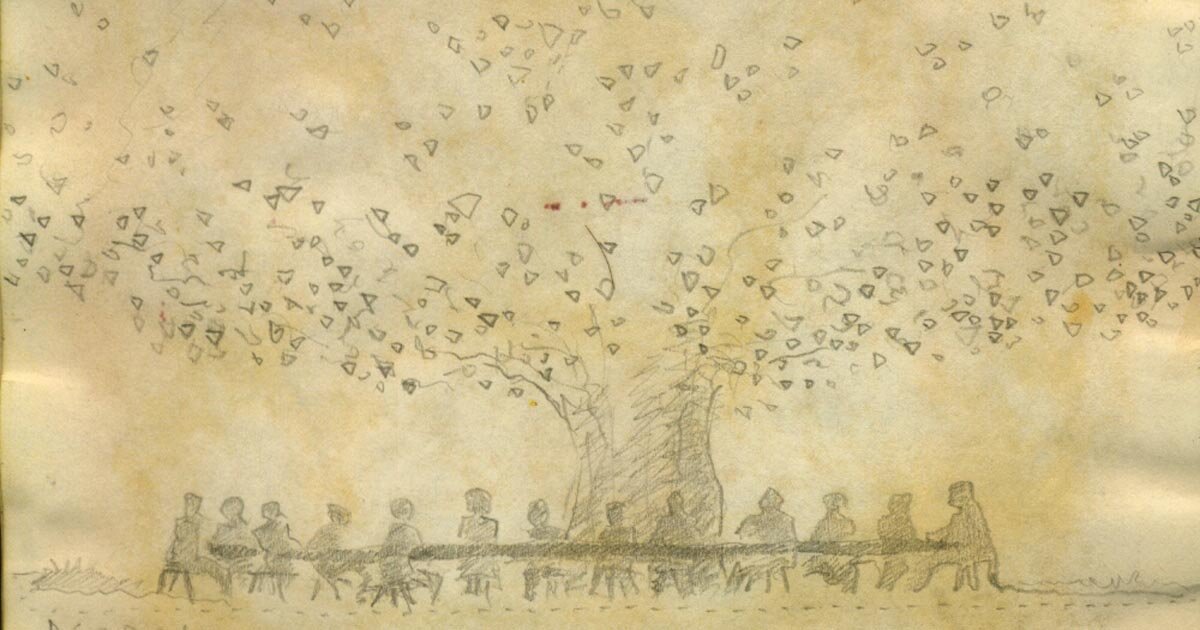Downshifting Romanian Way - Six stories about green communities

An eco-friendly way of life requires genuine actors who reject consumerism, the money chase to accumulate the fetishes of "high" social status, but instead value quality time and a way of life as close as possible to the natural environment. There are several ways to arrive at these beliefs, one of which is acquired through education from a microcollective that values these values or, more recently, through the phenomenon of downshifting.
"The downshifting phenomenon was born out of Western society's refusal to become a slave to material values and to consume your entire existence chasing after money or a hierarchical position. Downshifting means refusing to enter into a certain regimentation (through training), refusing position, refusing high salaries, etc. The basic idea is the quality of life of the individual, which is not determined by how he or she positions him or herself materially (you don't need so much money to be happy), but by being able to make intelligent use of the time you have to live so that you don't become a slave to work. It is therefore a work ethic."1
When environmental thinking stems from family upbringing, i.e. values are filtered and passed down through the generations, it is a cultural heritage preserved and propagated with great care and conviction. Its justice is not even questioned. Downshifting, on the other hand, has emerged as a form of rebellion against an extremely demanding lifestyle whose actors have realized "that it is about manipulation, a certain conditioning of consumer status. It is said that women come home late, but with a lot of money, they buy a lot of things with that money and they make the child a consumer and they condition him. The child in turn is full of money, but without parents. The child, neglected but with money, may become violent or run away from home. Drug use is also a form of protest, not just an addiction, because imitation is not enough to explain the spread of this phenomenon".2
People, who for one reason or another choose a conscious life in harmony with their natural environment, want to live closer to nature, in the countryside or even in the wilderness, in buildings made of natural materials specific to the place, built using traditional techniques and typical of the materials in question, and want to eat food from clean and natural sources. This involves either homesteading or joining a community that provides various goods produced by its members through barter.
"Permaculture approaches the human community as an ecological system designed to sustain its members in all aspects, in an environment that mimics the natural world and is stable over time. Permaculture aims to design an ecological human habitat and a natural food production system. The environment is a territory used by the human community to build and develop harmoniously, mimicking the forms and relationships of the microclimate in which we live.
The social principles of permaculture aim at cooperation between communities and between members of each community in order to find ways of working together and to achieve beneficial results for the whole community. By gaining common knowledge, feelings and motivations, members of a community create positive change for the whole community. This type of cooperation is not achieved through one expert listening to everyone else, but rather through action groups and support groups aimed at achieving beneficial change in the community."3

Families and members of such a community choose to live in green housing. Such a house is not a sophisticated construction (N.B.: these constructions are not to be confused with passive houses!), it can be any peasant or vernacular construction made entirely of local natural materials. But living in such a construction does not necessarily mean giving up a certain standard of contemporary comfort: the house can be equipped with a modern kitchen, bathroom and sanitary facilities, central heating - based on renewable, economical and environmentally friendly resources.
There is a worldwide trend of city dwellers seeking to live simpler and healthier lives. Some of them choose to downshift to the city, for others the solution is more far-reaching, moving to the countryside or even establishing new communities (so-called intentional communities). Although the first intentional communities emerged worldwide in the 1970s, following the hippie movement, in recent years communities have come back into the public eye in search of healthy and responsible living. In our country there are several such community initiatives in the pipeline.
Stanciova is a village in the hills near Recaș where some young people have moved into the existing community. The first step was taken in 2000. They chose to make use of the existing building stock, moving into existing houses, repairing them using old techniques. They did it slowly, discreetly, but with common sense. No specialists, just respect for nature and gratitude for old houses. The community is expanding, attracting outsiders. Coming from a different culture, they have become involved in village life and have helped the community where needed; for example, in the village kindergarten.
Another type of communities are those that start from a carefully chosen piece of virgin land, where a group of people want to become independent from the system and start a settlement from scratch with the aim of achieving a self-sustainable way of life. An example in our country is near Făgăraș, in the hills near the Șinca Veche Monastery, where the "Armonia Brasovia" community has been set up.
The natural houses erected in the new communities usually have some general characteristics, which come as a result of the philosophy of life of the future inhabitants. One characteristic of living for this type of people is that they build their houses with their own hands and help each other to erect them. Natural materials are used to build the houses, especially those found in situ, as this is the cheapest, most affordable and natural solution. Simple construction techniques are chosen, which do not require special training, are non-toxic, non-hazardous and can be learned and applied immediately by anyone. For example, both women and children can participate in building a cob (unburned lumps of clay) house. By building their houses themselves, the inhabitants will know how to maintain and repair them over time, and the example they set for their children will teach them practical skills from an early age.
Another feature of houses built from natural materials is that they are generally smaller than average houses. Interior spaces are combined, multi-functional and efficiently used. Why? Because they are desired to be easy to maintain, easy to heat, and because their inhabitants spend much more time outside in nature, not needing, for example, large living rooms.
NOTES:
1 The downshifting phenomenon . Interview with Aurora Liiceanu, conducted by Eugen Dumbravă, 2012, http://frumoasaverde.blogspot.ro/2012/06/fenomenul-downshifting-aurora-liiceanu.html
2 Ibid.
3 Florin Baci, Adina Sztahura, Tudor Petruțiu, Radu Crăciun, chap. "Introduction", in Urban Permaculture. Manual of environmental protection and regeneration activities, Romanian Permaculture Association, Cluj-Napoca, 2014.